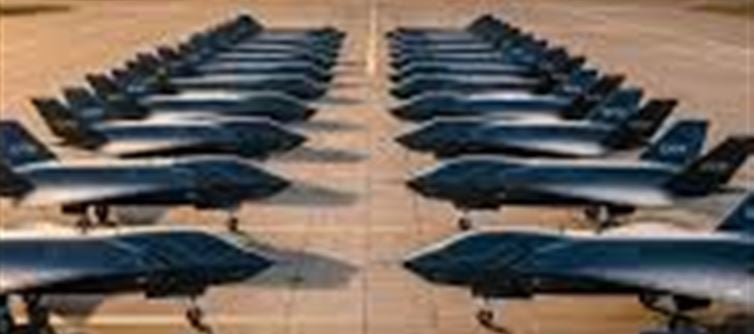
In a significant leap forward for India's defense capabilities, the Indian air Force (IAF) is set to transform its aerial warfare strategy by introducing a fleet of unmanned stealth jets. This ambitious plan, aimed for completion by 2040, will see the induction of 20 squadrons of unmanned aircraft, totaling between 300 and 400 jets. This move is poised to revolutionize the way india defends its skies and engages in modern combat. Here’s what we know about this groundbreaking development:
1. Post-Operation Sindoor success Sparks Transformation
The indian air Force’s decision to push for unmanned stealth jets follows the success of Operation Sindoor, where the use of advanced technology and strategic planning proved highly effective in modern warfare. This operation highlighted the potential of unmanned aerial vehicles (UAVs) in combat situations, prompting the IAF to accelerate its plans for automation and stealth in its fleet.
2. The Rise of Stealth Technology
Unmanned stealth jets offer a range of advantages over traditional manned aircraft, particularly in terms of survivability and strike capability. With low observability to radar, these jets can infiltrate enemy defenses more effectively, carrying out high-risk missions with minimal chances of detection. By 2040, the IAF plans to integrate stealth UAVs with cutting-edge technologies to match the growing challenges of modern aerial combat.
3. Strategic Implications: Enhanced Offensive and Defensive Power
The new unmanned stealth aircraft will drastically improve India’s aerial offensive and defensive capabilities. These jets will be capable of carrying out precision strikes, electronic warfare, and intelligence-gathering missions with far greater efficiency and safety for pilots. They can also be used in high-risk reconnaissance operations, reducing the risk to human lives.
4. Advanced AI Integration for Combat Strategy
One of the key elements of these unmanned jets will be the integration of artificial intelligence (AI). AI will enable the aircraft to execute complex combat maneuvers, analyze battlefield data, and even adapt to evolving scenarios in real-time. This autonomous decision-making ability will give the IAF a significant edge in dynamic combat situations, allowing for rapid and precise responses to threats.
5. Increased Focus on Cost Efficiency
Unmanned stealth jets are expected to be more cost-effective than their manned counterparts. With the ability to deploy larger fleets at a fraction of the cost of traditional fighter jets, these UAVs will allow the indian air Force to enhance its aerial presence while managing its defense budget more efficiently. Moreover, these aircraft require fewer resources for maintenance and can remain operational for longer periods.
6. Collaborations and Domestic Development
To make this plan a reality, the indian air Force is likely to collaborate with both domestic defense manufacturers and international partners. India’s defense ecosystem, which has been focusing heavily on self-reliance, is expected to play a crucial role in the development of these advanced unmanned stealth jets. The government’s push for “Atmanirbhar Bharat” (self-reliant India) is likely to steer the development of indigenous UAV technologies, further boosting India’s defense prowess.
7. Operational and Tactical Advantages
The introduction of unmanned stealth jets will also enhance India’s ability to maintain a forward defense strategy. These aircraft will enable the IAF to operate in hostile environments without risking valuable human resources. Additionally, they can be deployed for surveillance, air superiority, and strike missions, offering a versatile and multi-dimensional combat capability.
8. Future-Proofing India’s Aerial Combat Capability
By 2040, these unmanned stealth jets are expected to be the backbone of the IAF's tactical and operational air power. They will complement existing manned fighter jets, such as the Rafale and Tejas, creating a hybrid force that combines the precision and power of human-controlled aircraft with the autonomy and resilience of unmanned systems.
Conclusion: A New Era in Aerial Warfare
The indian air Force's plan to induct 20 squadrons of unmanned stealth jets by 2040 marks a paradigm shift in aerial warfare. With enhanced capabilities in terms of stealth, AI-driven autonomy, and cost-efficiency, this new fleet will significantly bolster India’s defense posture. As the world’s military forces move towards automation and advanced technologies, the IAF’s visionary strategy will ensure that india remains at the forefront of global defense innovations.
Disclaimer:
The views and opinions expressed in this article are those of the author and do not necessarily reflect the official policy or position of any agency, organization, employer, or company. All information provided is for general informational purposes only. While every effort has been made to ensure accuracy, we make no representations or warranties of any kind, express or implied, about the completeness, reliability, or suitability of the information contained herein. Readers are advised to verify facts and seek professional advice where necessary. Any reliance placed on such information is strictly at the reader’s own risk.
.jpg)




 click and follow Indiaherald WhatsApp channel
click and follow Indiaherald WhatsApp channel